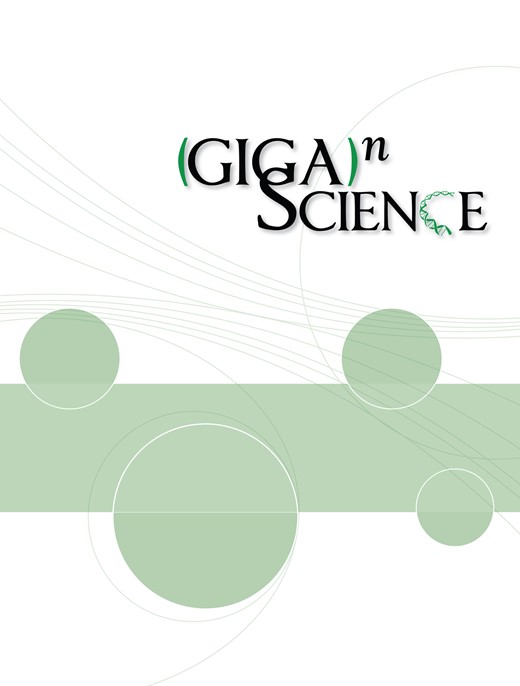单细胞转录组数据的改进整合显示了小鼠和人类心力衰竭的共同和独特特征
IF 11.8
2区 生物学
Q1 MULTIDISCIPLINARY SCIENCES
引用次数: 0
摘要
背景心血管研究在很大程度上依赖于小鼠(麝香猫)模型来研究疾病机制以及测试新型生物标记物和药物。然而,将这些结果应用于患者仍然是一项重大挑战,而且往往会导致药物无效。因此,开发具有高度相似性和预测价值的模型是转化科学的一项公开挑战。这就需要将小鼠的疾病模型与来自人类的疾病组织进行比较。结果 为了比较单细胞分辨率下的转录特征,我们实施了一个名为 OrthoIntegrate 的整合管道,它能唯一分配直向同源物,从而合并不同物种的单细胞 RNA 测序(scRNA-seq)RNA。该管道设计简单易用,可完全集成到标准的 Seurat 工作流程中。我们将 OrthoIntegrate 应用于射血分数降低型心力衰竭(HFrEF)患者心脏组织的 scRNA-seq 和慢性梗塞后小鼠的 scRNA-seq 上,慢性梗塞是模拟 HFrEF 的常用小鼠模型。我们发现了人类 HFrEF 患者与相应小鼠模型之间共有的和不同的调控通路。总体而言,54%的基因受到共同调控,包括心肌细胞能量代谢的主要变化。然而,有几种调控途径(如血管生成)在人类中受到特殊调控。结论 在人类中出现的独特通路表明,小鼠模型与人类高频低氧血症之间的可比性存在局限性,并表明应仔细验证小鼠模型的结果。OrthoIntegrate 可公开访问 (https://github.com/MarianoRuzJurado/OrthoIntegrate),可用于整合其他大型数据集,提供模型与患者数据的一般比较。本文章由计算机程序翻译,如有差异,请以英文原文为准。
Improved integration of single-cell transcriptome data demonstrates common and unique signatures of heart failure in mice and humans
Background Cardiovascular research heavily relies on mouse (Mus musculus) models to study disease mechanisms and to test novel biomarkers and medications. Yet, applying these results to patients remains a major challenge and often results in noneffective drugs. Therefore, it is an open challenge of translational science to develop models with high similarities and predictive value. This requires a comparison of disease models in mice with diseased tissue derived from humans. Results To compare the transcriptional signatures at single-cell resolution, we implemented an integration pipeline called OrthoIntegrate, which uniquely assigns orthologs and therewith merges single-cell RNA sequencing (scRNA-seq) RNA of different species. The pipeline has been designed to be as easy to use and is fully integrable in the standard Seurat workflow. We applied OrthoIntegrate on scRNA-seq from cardiac tissue of heart failure patients with reduced ejection fraction (HFrEF) and scRNA-seq from the mice after chronic infarction, which is a commonly used mouse model to mimic HFrEF. We discovered shared and distinct regulatory pathways between human HFrEF patients and the corresponding mouse model. Overall, 54% of genes were commonly regulated, including major changes in cardiomyocyte energy metabolism. However, several regulatory pathways (e.g., angiogenesis) were specifically regulated in humans. Conclusions The demonstration of unique pathways occurring in humans indicates limitations on the comparability between mice models and human HFrEF and shows that results from the mice model should be validated carefully. OrthoIntegrate is publicly accessible (https://github.com/MarianoRuzJurado/OrthoIntegrate) and can be used to integrate other large datasets to provide a general comparison of models with patient data.
求助全文
通过发布文献求助,成功后即可免费获取论文全文。
去求助
来源期刊

GigaScience
MULTIDISCIPLINARY SCIENCES-
CiteScore
15.50
自引率
1.10%
发文量
119
审稿时长
1 weeks
期刊介绍:
GigaScience seeks to transform data dissemination and utilization in the life and biomedical sciences. As an online open-access open-data journal, it specializes in publishing "big-data" studies encompassing various fields. Its scope includes not only "omic" type data and the fields of high-throughput biology currently serviced by large public repositories, but also the growing range of more difficult-to-access data, such as imaging, neuroscience, ecology, cohort data, systems biology and other new types of large-scale shareable data.
 求助内容:
求助内容: 应助结果提醒方式:
应助结果提醒方式:


